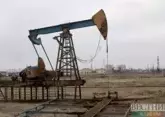While the volatility in commodity markets continues, the difficulty in pricing raises concerns about economic activity, Anadolu Agency reports. The "hawkish" policies of central banks, especially the US Federal Reserve, the possibility that conflicts may intensify in the Russia-Ukraine conflict, and the rising number of COVID-19 cases in China continue to be effective on the commodity market. In the commodity market, a fluctuating course with sharp price movements was observed last week.
After concerns that the inflation rate, which recorded its highest annual rise since 1981 with 8.5% in the US, could strengthen the hawkish stance of the Fed, and Russian President Vladimir Putin's announcement that "The Ukrainian side violated their agreements reached in Istanbul," the volatility in the commodity markets continued last week. While geopolitical risks have pushed the commodity prices up, the monetary policy statements of the world's leading central banks have suppressed the prices. Analysts said the Fed officials continued their "hawkish" guidance and said a 50 basis points rise in interest rates at Fed's May meeting is seen as almost certain by the bond markets.
Price of an ounce of gold exceeds $1,970
Gold gained 1.3%, silver 3.5%, and platinum 1.7% last week, while palladium lost 2.2%. With the increasing risk perception, the ounce price of gold exceeded $1,970. Gold climbed above $1,980 per ounce last week, nearing the monthly high, as a result of the demand for safe assets amid the Russia-Ukraine war and accelerating inflation. After the announcement of new sanctions by the US and western countries, palladium sales increased last week. Palladium prices saw sharp rises in the previous week due to concerns about the increasing supply chain issues. The price of copper lost 0.2%, aluminum 2.6%, and nickel 2.9%, while lead rose 1.1% and zinc 4.7%. Analysts said that with the increase in COVID-19 cases and restrictions in China, there was a decrease in commodity exports, especially metals, in March. Zinc prices rose last week with increasing supply concerns and production drops in China and high energy prices in Europe.
Natural gas hits 13-year high
Last week, sharp increases were seen in energy commodities. The natural gas traded on the New York Mercantile Exchange, which completed the week with an increase of 16.3%, reached its highest level since November 2008 with $7,346. The fact that natural gas storages were less than expected last week in the US and the decrease in production brought about a sharp rise in prices. Brent crude oil rose by 8.6% with the increasing supply concerns in global oil markets effective in the rise. On April 11, the foreign ministers of the EU member states in Luxembourg discussed the oil and gas sanctions against Russia, while no decision was taken, Josep Borrell, the EU foreign policy chief, said. The news flow about the statements of OPEC Secretary-General Mohammed Barkindo that "the embargoes imposed on Russia will create a major supply shock and there will be no alternative to the volume provided by Russia to the market" also triggered the rise in prices. Russia's statements that it has reached a "dead-end situation" in negotiations with Ukraine also raised the supply concerns.
Agricultural commodities
Sharp movements were also observed in agricultural commodities last week. Cotton for July contracts on the New York Mercantile Exchange was $1.4478, while corn traded on the Chicago Mercantile Exchange reached its highest level since September 2012 with $7.86. Cotton finished the week with an increase of 8% and corn with a rise of 3%. The price of corn hit $7.90 on early Monday, its highest level since September 2012. The price of cotton was on the rise with the predictions that the demand would rise as a result of an increase in weekly cotton exports in the US. The negative impact of planting and harvesting in Ukraine and the concerns that the cold weather wave in the US would slow down the planting process affected the corn prices. Analysts emphasized that if the problems caused by weather conditions in corn continue, the $8-level in prices may be in question.
The price of wheat traded on the Chicago Mercantile Exchange rose 4.3% and rice 2.6%, while soybean fell 1.5%. In the Intercontinental Exchange market, the price of coffee fell 3.6%, sugar 0.9%, and cocoa 2%. Analysts stress that coffee producers earlier predicted that this year would be a difficult one and that drops in coffee prices were observed due to concerns about demand. 'Hot and dry weather in US raises concerns about cotton supply'
Zafer Ergezen, a commodity markets expert, told Anadolu Agency that the Russia-Ukraine war and the high oil prices have increased the corn prices. The hot and dry weather in the US raised the concerns about cotton supply, Ergezen noted, saying the high oil prices created an expectation that the demand for cotton would increase, causing a rise in the cost of alternative products. Ergezen added that with the closures in the Far East -- the region with the highest rice production -- the rice prices have also increased. Sugar and coffee closed last week with a decline, as the Russia-Ukraine war had also adversely affected the sugar and coffee markets, he said.










